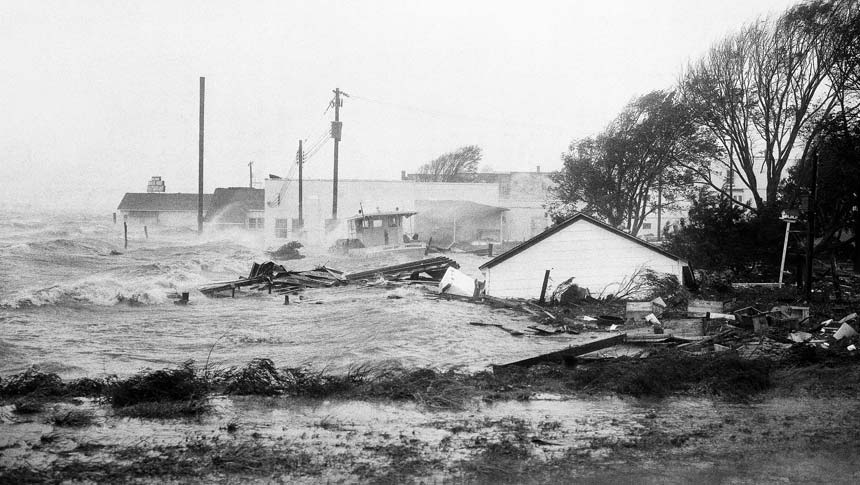Evacuation Planning
Evacuating before a hurricane is one of the surest ways to protect yourself and your family.
That said, evacuating can be challenging and even expensive. If there’s a massive evacuation underway, routes inland may be clogged with other evacuees, hotels may be booked solid for miles around, and shelters can be overcrowded. Evacuees also worry about their property while they’re gone, as well as their ability to return home after the storm.
So, the decision to evacuate can sometimes be a hard one.

Here are reasons you should evacuate before a hurricane
Your home is close to the coast and/or at low elevation
Storm surge is a hurricane’s biggest killer. So, before a hurricane you must make certain you’re well above the height of the forecast storm surge.
Actions
- Check the National Hurricane Center site. When a hurricane threatens, they provide detailed maps showing expected inundation.
- Know your elevation and the height of the forecast storm surge.
- Listen to local officials.
If your home is not well above the height of the forecast storm surge and/or if local officials advise evacuation, you should evacuate.

You live in a mobile home or a house that’s not up to code
Hurricane winds can destroy single-family homes. So, even if you’re high above sea level, you still might need to leave. Mobile homes are especially unsafe in high winds, and poorly-built houses don’t fare much better.
Action
If your house is not permanent and well-constructed, you should evacuate.
You have family members with special needs
During a hurricane, you’re likely to lose power, and the outage could last for days or weeks. Also, food, water, and medicine may be in short supply after a hurricane. These factors could impact your ability to protect the health of vulnerable family members.
Action
If anyone in your household is disabled or dependent on medical equipment, or if you have elderly family members who need constant care, you should evacuate.
Evacuate well before the hurricane, in fair conditions.
Do not wait until the hurricane is already bearing down on your town. Once the rain and wind start, driving is difficult — and driving in full-on hurricane conditions is downright dangerous. Don’t do it.
Our favorite weather tracking apps
There are now a myriad of excellent weather tracking apps that can be installed on your phone or tablet allowing you to track hurricanes and other extreme weather conditions. Most of these storm trackers work on both iOS and Android devices, and some can even be used from a desktop web browser.
AccuWeather Resources
AccuWeather is one of the best all-purpose weather apps. It provides timely emergency alerts for all sorts of events, making it a great hurricane tracker app and a general weather app for showing when it will snow, rain, flood, etc.
Ambient Weather Network
Ambient Weather Network connects forecasters, weather-station owners, and everyday consumers to the fastest growing online community for hyperlocal weather insights. Get forecasts, radar, weather-cam videos, and real-time conditions—and hear what others are saying. Or share your own readings and make your own forecasts. It’s all in one easy-to-use iOS/Android app.
Hurricane Tracker
Established in 2009, this app has been applauded as one of the best hurricane trackers.
My Hurricane Tracker & Alerts
This app is available only on the App Store for iPhone and iPad. My Hurricane Tracker gives you the most comprehensive tools for tracking tornados, cyclones, tropical storms, and weather warnings available. Many features: Interactive tracking maps for each hurricane, NOAA forecast map & storm satellite imagery, historic search of previous storms from 1851 (or 1949 for Pacific), weather warnings from the National Weather Service and push notifications for weather warnings or new storm formations.
Weather Underground
Weather Underground (Android, iOS) is a crowdsourced information app that brings hyperlocal weather forecasts to your smartphone. You will also find photos, interactive radar data and satellite maps.
Hurricane Hound
As its name implies, Hurricane Hound (Android) lets you track active hurricanes using US radar and weather satellite data. Hurricane Hound is the Android response to National Hurricane Center Data. It is only available on Google Play for $1.99 and uses Google Maps to display storm patterns and movement. It also uses National Weather Service data to offer “possible danger” prediction areas.
MyRadar Weather Radar
MyRadar Weather Radar (Android, iOS) provides you with timely and accurate data on approaching storms, courtesy of high-res animated weather radars and 11 different overlay graphics, including a current satellite image of cloud cover. You can also enable severe weather watches and warnings via push notifications, so you are alerted about impending thunderstorms, hurricanes, and tornados.
The Weather Channel
According to Lifewire, this app is one of the best ways to track hurricanes. The storm tracker is very detailed and offers precise forecasts.
Windy
Windy is one of the more unique hurricane tracker apps. It is a map with wind information, and you can view where the wind is going, swirling and the resulting weather patterns. It is not necessarily for hurricanes, but it’s definitely useful when tracking one. It is supported in 40 languages and sources weather data from thousands of places around the worldwide.
